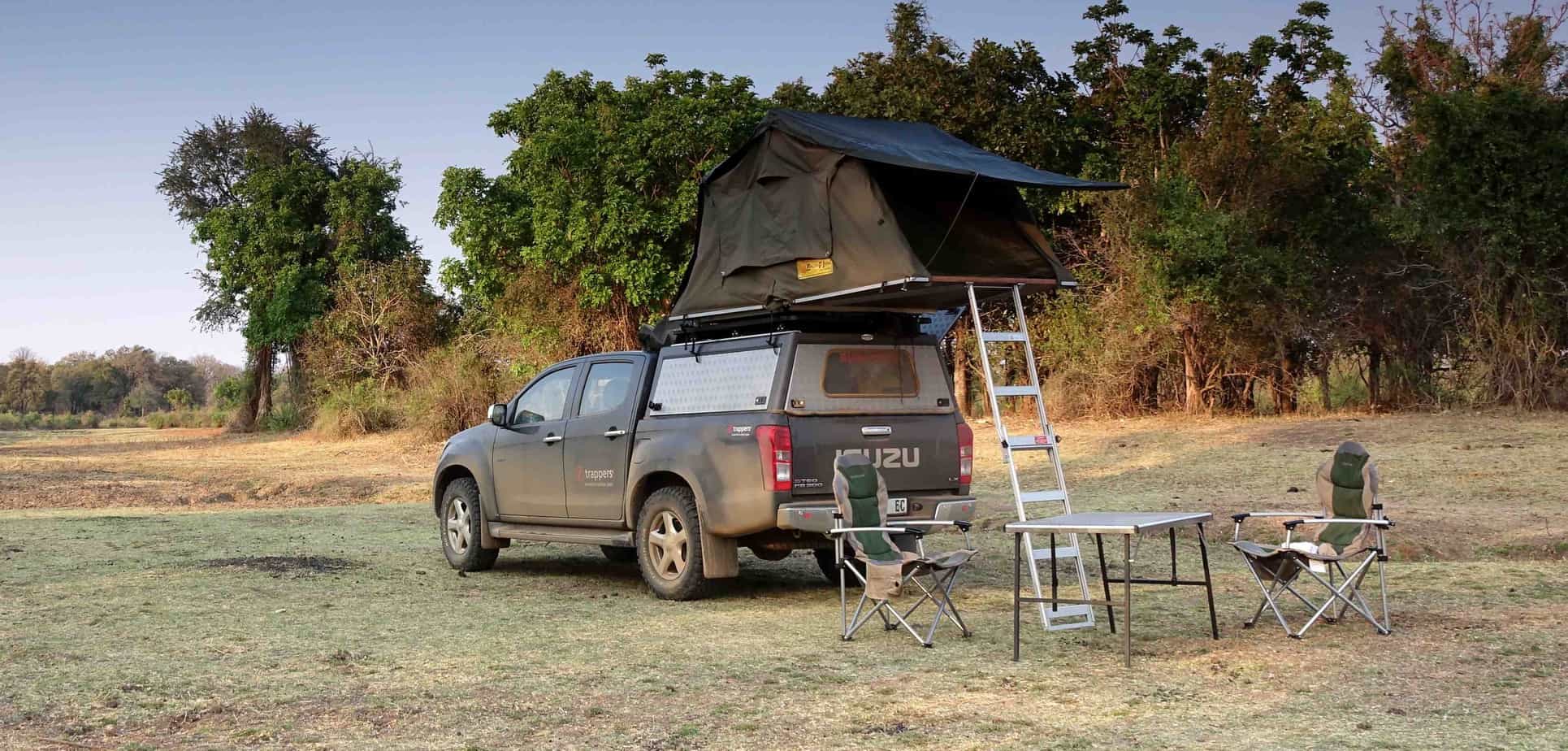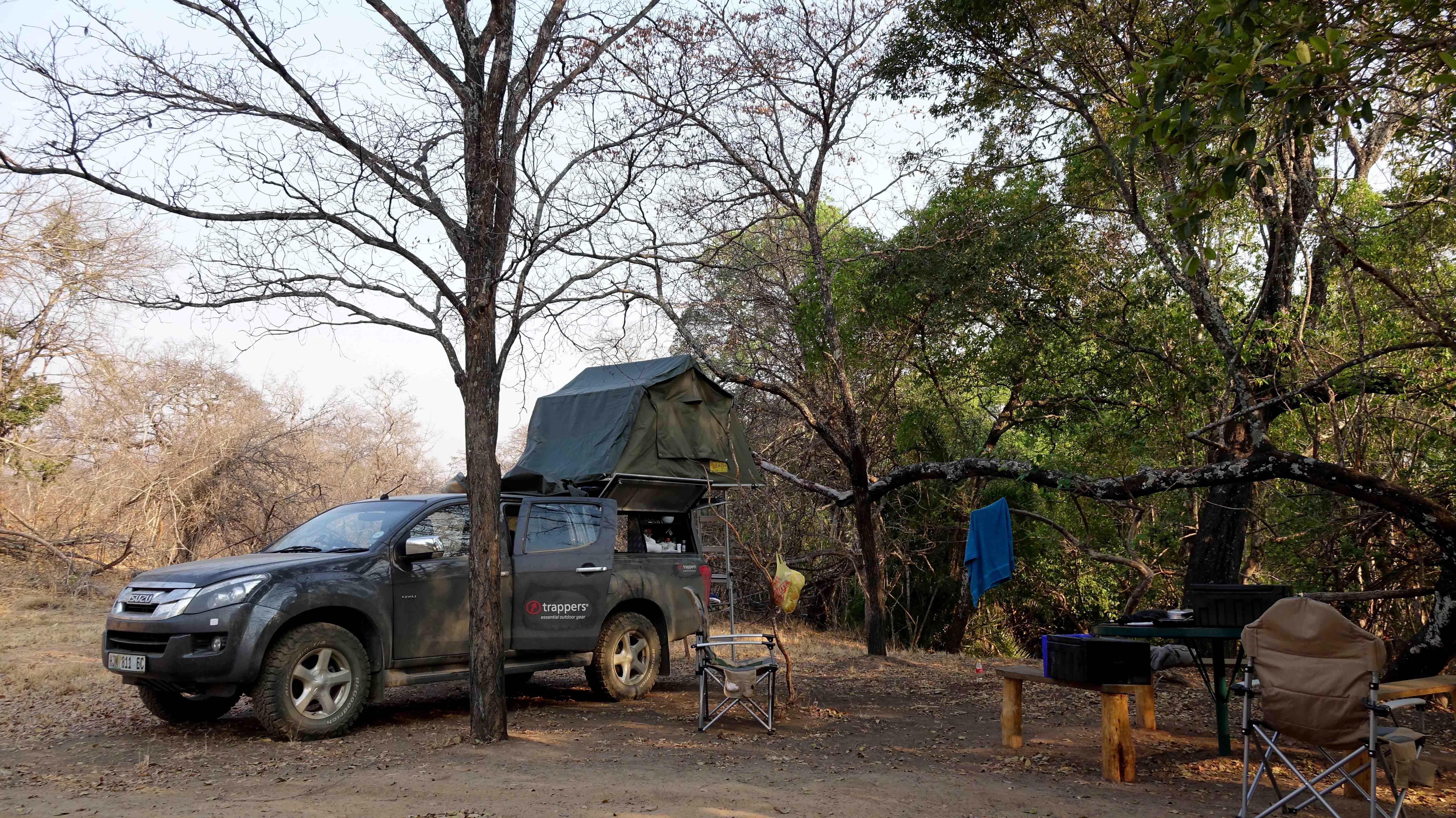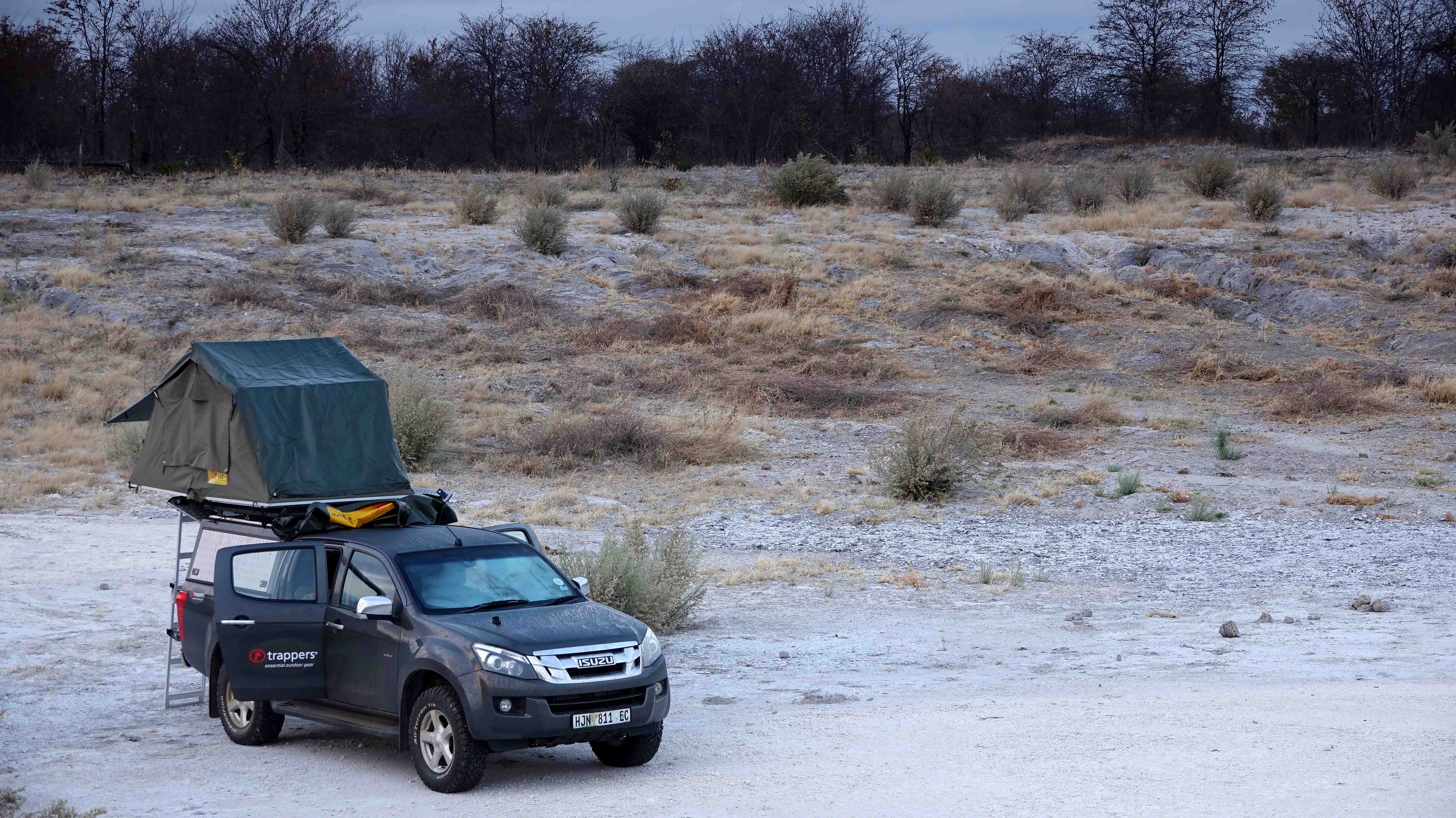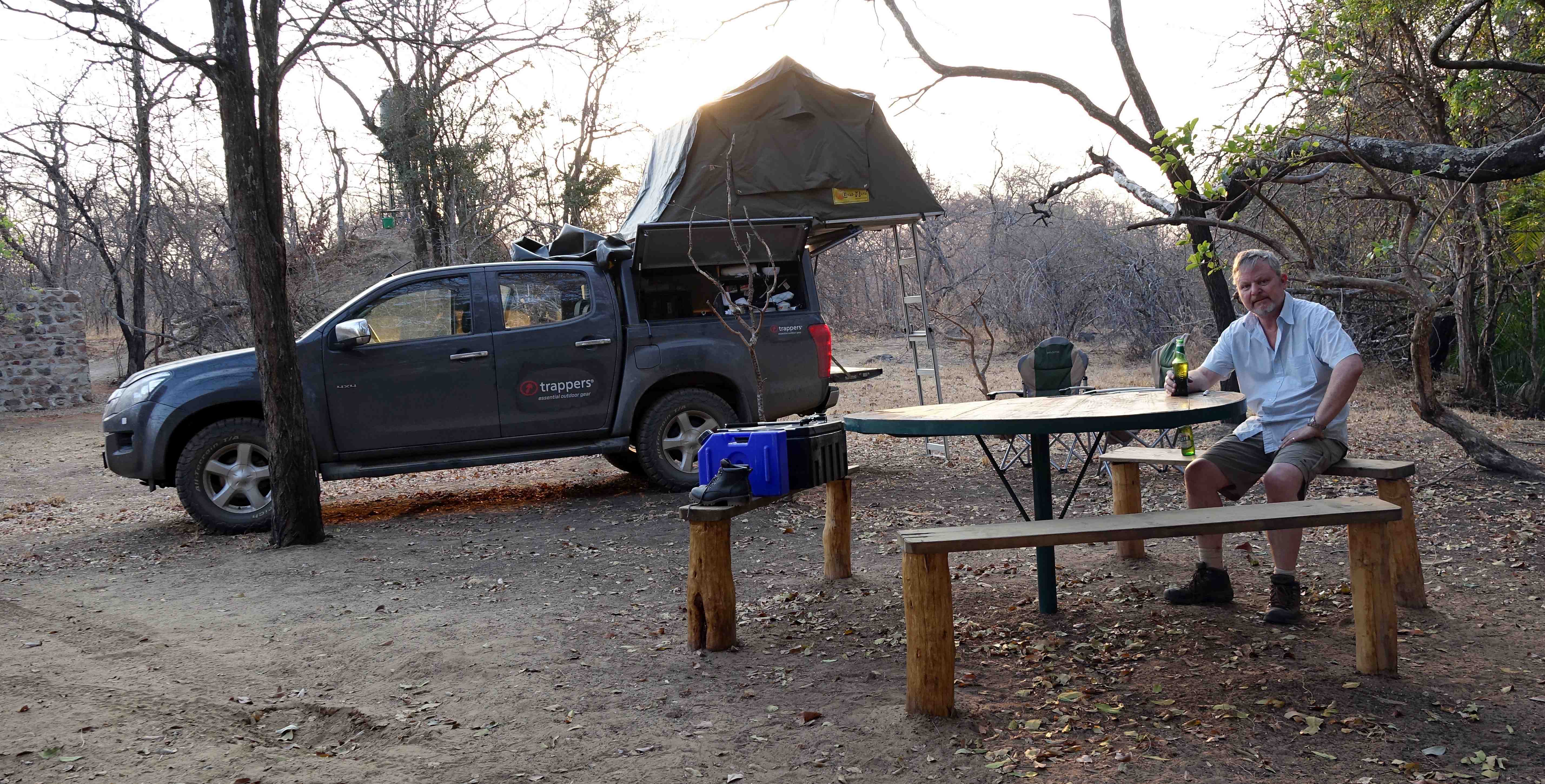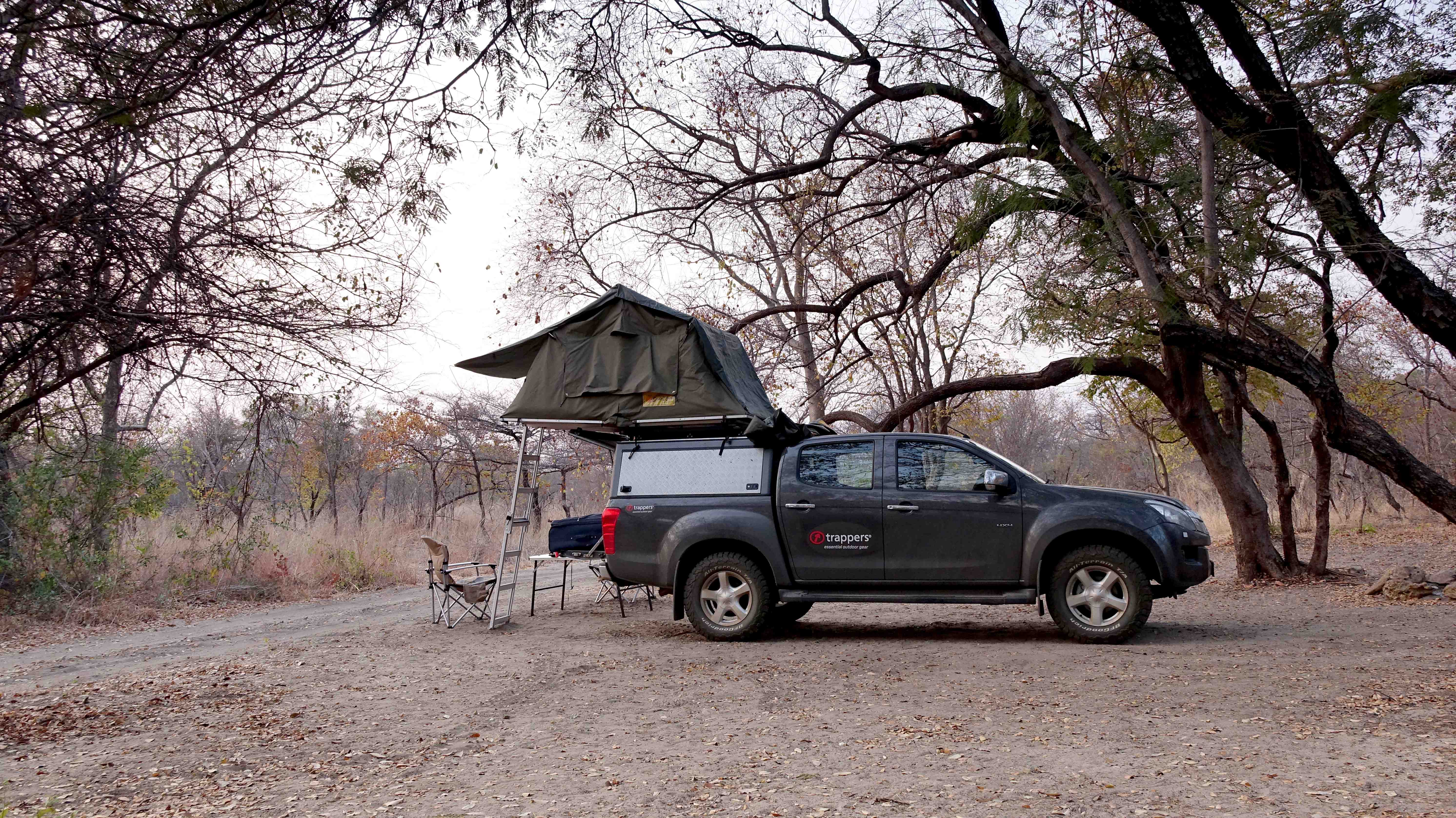On a recent expedition and TV shoot in Zambia, I used a well-respected roof tent by Ezi-Awn. And it made me think. In my travels I have used many types of roof tent, as well as many types of ground tent. The advantages and disadvantages of each type are not always obvious to travelers who have never rigged and slept in a roof tent. Which do I prefer? Which one is easier to erect, wrap up, and which type is more weather proof? Here are my findings.
Convenience and space saving
To me, the most significant benefit of a roof-top tent is that mattresses, sleeping bags and pillows remain in the tent. The space saving can even be enough to sway a decision from buying a roof-rack over a trailer. Unless it is housed in a hard case, in my view, there is little convenience of a roof-top tent over a ground tent. This includes the perceived convenience of a tent on the roof. When a roof tent is covered by a waterproof polyurethane bag, replacing the bag before setting off can be awkward for the lone traveler. For two people, it’s reasonably easy with most tent models. All in all, it can be as time consuming as a regular dome tent. It is also quite strenuous to pack away because it is normally done while trying to balance, standing on the back tires, with dust, now mixed with dew making one’s clothes very dirty. In this respect, it’s not unlike the dirt one collects when rolling up a ground sheet.
As one who travels alone at times, in my view, roof tents with rigid housings are nicer in most respects, other than price, and with some models, size. Without exception they are easy to erect and much easier to pack away, which can often be done by just standing on the rear tailgate and pulling them down, folding in the fabric as you go.
The weather
When roof tent shopping, I recommend looking for sturdy construction. Those built with very light poles and lightweight fabric move around a lot in the slightest breeze and in windy conditions, sleeping in them doesn’t come easily. This is partly because the tent, being aloft, is more susceptible to wind. Many manufacturers are trying to make their products lighter but few have succeeded in doing a good job because these light-weight products don’t last and they often leak.
Space
Two smallish people often find roof tents cramped, so I would suggest selecting the widest tent available. I find the rigid cased tents more spacious, although actual measurements dispute this.
Before you purchase any tent be sure to climb all the way in and out and have the entire family do the same. Disappointments come when the tent is taken on a safari and only then is it realized that it is too small. In the case of a ground tent, the carry bag might be so tightly packed that it’s a huge struggle to return it to its bag, which is the problem with 90% of tents sold today. And then there is the OZ-Tent. If you are tired of the hassle of pitching and packing away your ground tent, this might be the indisputable answer to your prayers.
There are many more reasons to buy or not to buy
SUMMARY:
ROOF TENT
Secure from wild animals, to a point. A rapid evacuation from the area is not possible.
GROUND TENT
Less secure from wild animals although they are not a real danger, more a perceived one. Rapid evacuation is far easier.
ROOF TENT
Secure from insects and scorpions. Security from mosquitoes depends on tent quality.
GROUND TENT
Keeping the flap zipped up is more important. Security from mosquitoes depends on tent quality.
ROOF TENT
Even the large ones can only sleep two adults, and even then it’s cramped. Leave your clothes bags in the vehicle.
GROUND TENT
Tents advertised as 3-man bow tents can easily accommodate three adults and their bags.
ROOF TENT
Takes a shorter time to erect, perhaps 20%.
Easy to unpack. Some are awkward to pack up and return to its cover. Some are easy, and the cover tarpaulin can make you dirty.
GROUND TENT
Will generally take a bit more effort to pack away and the ground sheet can make you dirty.
ROOF TENT
Must be collapsed and packed away fully before the vehicle can be moved, for a game drive etc.
GROUND TENT
Self-standing. More convenient. You can leave and ‘claim’ a campsite with a ground tent.
ROOF TENT
If the ground is not level, the vehicle can be made level with rocks etc.
GROUND TENT
If there is no level ground or it’s covered with rocks, that’s hard luck.
ROOF TENT
You have to be a bit of a contortionist to get dressed and undressed in a roof top tent.
GROUND TENT
One can almost stand up, even in the quite small ones.
ROOF TENT
The mattress and sleeping bags can be left inside as the tent is folded away, saving space in the vehicle. A huge advantage.
GROUND TENT
Tent must be emptied when packed away.
ROOF TENT
Heavy. Reduces remaining weight permitted on roof. Lifts the centre of gravity.
GROUND TENT
In comparison, lightweight and can be carried anywhere.
ROOF TENT
More expensive to buy as well as carry, as an increase in fuel consumption is unavoidable.
GROUND TENT
Far less expensive to buy and own.
ROOF TENT
They are large, bulky and heavy. Its weight is enough to raise the vehicle’s centre of gravity. It also takes up some, if not all the space on a roof rack.
GROUND TENT
Large ones are bulky to carry inside a vehicle, but small ones are not. Far lighter and can be stowed anywhere convenient in vehicle or trailer.
See more of his videos on www.4xoverland.com or his YouTube channel: https://www.youtube.com/user/4xforum


